#chernobyl npp
Text
CHERNOBYL 26.04.1986 - 26.04.2024
Today marks 38 years since one of the greatest tragedies in human history occurred.
A lot has been said, written, invented, drawn and sung.
The main thing that will remain forever is the desire of people to help their neighbor, to know the truth and to seek justice in all ways.
Even if sometimes this justice can only be found at the bottom of one's own heart.
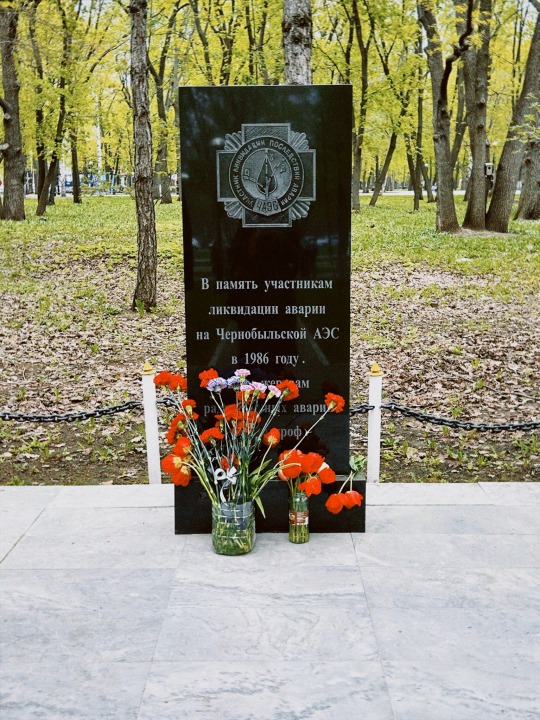
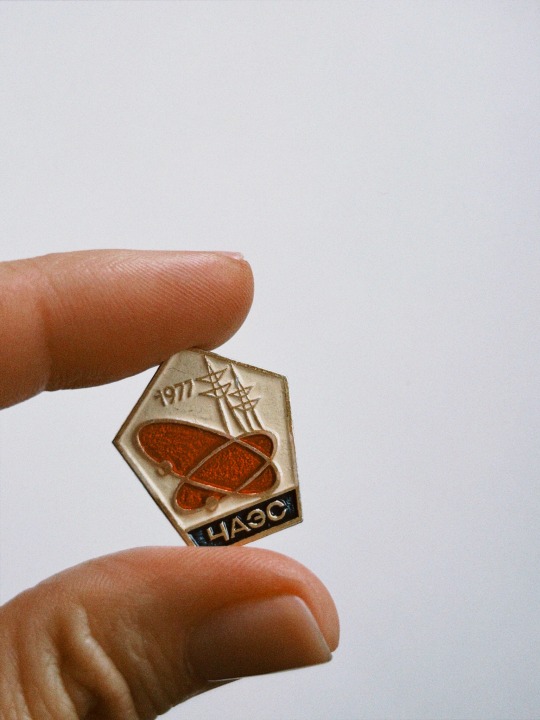

#Chernobyl#chernobyl disaster#чернобыль#чернобыльская катастрофа#my pictures#moscow#чаэс#chernobyl npp#april 26#1986#26.04.1986#26апреля#valery legasov
37 notes
·
View notes
Text







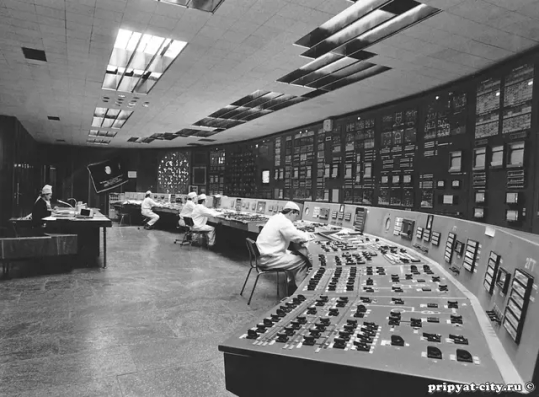

The divine interiors of the Chernobyl NPP Control Rooms... yes, one is not the reactor control room like the others but it's also oh so lovely.
#if Chernobyl is my religion then the NPP is my cathedral#file: special interest: chernobyl#chernobyl#26th april 1986#pripyat#nuclear power plant#soviet union#nuclear disaster#chornobyl#chnpp#чернобыль
12 notes
·
View notes
Text
❗if you don't want to repeat Chernobyl disaster, you should read it ❗
what is happening?
The Russian army has placed multiple rocket launchers and other military weapons and equipment on the territory of the Zaporizhzhya NPP(It is the largest nuclear power plant in Europe and the third largest in the world in terms of total capacity) . High-voltage transmission lines at the station have already been damaged by shelling. And this is a direct path to a nuclear accident.
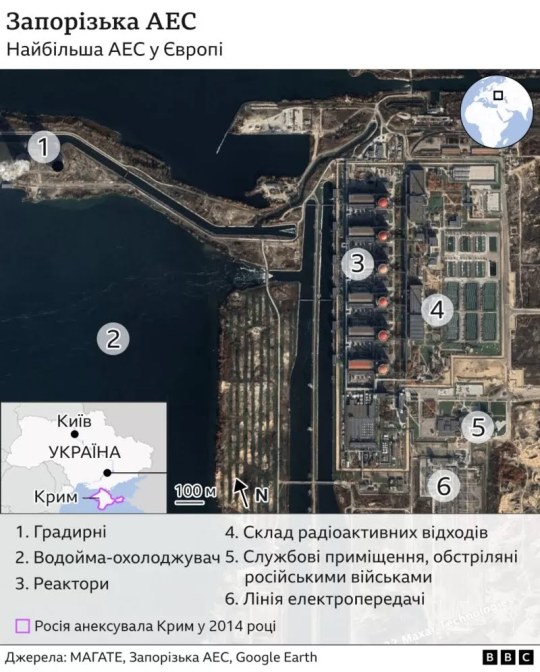
what consequences can be?
«If a cruise missile hits the reactor compartment of Zaporizhzhya station, for example, the radiation accident will have consequences for European countries, for Crimea, for Russian territory and, of course, for Ukraine» says independent Ukrainian energy expert Olga Kosharna.
During the accident, there will be a one-time release of radioactive cesium-137 in quantities potentially dangerous for agriculture. In the worst case - dangerous for the health of adults. Most of the emissions will probably fall on Ukraine.
why the situation of Fukushima can repeat?
Fukushima was a disaster because the earthquake and tsunami stopped the reactor from cooling. As a result, a steam explosion occurred in the active zone, the containment, i.e. the hermetic zone of the reactor, was destroyed. Radioactive substances got outside.
This scenario may repeat itself at the ZNPP: but the reasons are not a natural disaster. This is the shelling of the Russian army.

what about the staff of the nuclear plant?
Our personnel disappears from the first day of occupation. People steal according to a certain algorithm. Initially - public activists of the power supply. Next - participants of ATO(The zone of Russian-Ukrainian confrontation in Donbas is a part of the territory of Ukraine with a special legal regime as a result of the hostilities of the war in the east of Ukraine) and their relatives. Next - everyone who identifies itself as a Ukrainian. The Russian occupiers took those who stood in the avant-garde of city protection. Energy feeders were conducted by shares on the checkpoint at the city against the Russian army and occupation of the city. Those who were in the first ranks - immediately found themselves on the basement. Under torture, they passed others - and so a chain.
They torture them to death. I will give an example. Recently, the Russian military stated that there are abandoned weapons in the splash pools of the ZANP (pools for cooling water - Ed.). They wanted to force our full-time scuba diver from the hydro shop to dive into splash pools and look for weapons. He refused. He was beaten to death.

#war in ukraine#ukraine#zaporizhzhia npp#save ukraine#help ukraine#energodar#nuclear disaster#chernobyl#russia is a terrorist state
121 notes
·
View notes
Text
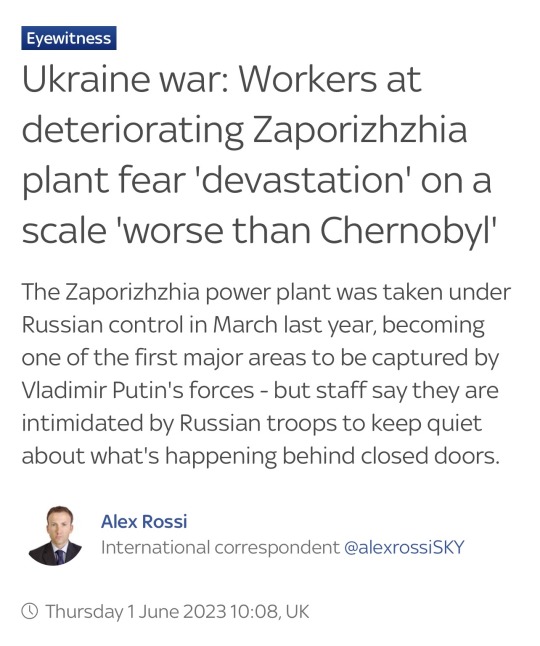
"The level of radioactive pollution, and most importantly the area of contamination, will be thousands of square kilometres of land and sea… it would be much, much worse than Fukushima and worse than Chernobyl."
WE NEED TO STEP UP. This is not Ukraine’s problem: it’s the WORLD’S problem.
#chornobyl#chernobyl#ukraine#politics#war in ukraine#zaporizhzhya nuclear power plant#zaporizhzhia npp#zaporizhzhia#valery legasov#boris shcherbina#russia invaded ukraine
19 notes
·
View notes
Text
Hi!
I just saw something cool on TV and I thought to share it with you. As you can read from my previous posts, in Poland is going to built a nuclear power plant.
Tonight, I saw an interesting advertisement spot about Rodzina Atomickich (The Atomic Family) that is going to educate people in Poland about nuclear energy.
As government says, according to poll that was conducted in November of 2021, 74,3% of people wants to have NPP in Poland. And in the same time, over 94% of people were telling that it is good to have a informative campaign about power plant.

Source:
@elenatria
@4everflowercore
@connihd
3 notes
·
View notes
Text
it's rlly about time i understood that nobody cares about ukraine anymore after these 9 (2 for non-ukrainians) years.
like, i mean
20 percent of ukraine's territory is occupied by russia for almost two years of the full-scale war already.
mariupol - a city in south - does not exist anymore, thousands of people died there, thanks to russia. russian aviation dropped a bomb on a drama theater which had a large inscription "KIDS" near the building. in the theater there were not azov military, but people, families, children and newborn kids. all of them died under the rubble. mariupol - even as a "city" under russian occupation - does not exist.
nova kakhovka dam was blown up in summer 2023, resulting in one of kherson's banks being completely flooded, with dnipro river's water reaching the private houses' roofs; resulting in corpses of people and animals floating in the stream of this very water for kilometres away from kherson.
russia keeps bombing every single thing they can fucking reach, be it hospitals, schools, kindergartens, clubs, apartment buildings with people in there. they do not care about anything but destroying ukraine and killing ukrainians.
russia is planning on bombing ukraine's power stations in winter to cause blackouts for the whole country like it was in winter 2022-23. they want us to suffer without light, electricity, mobile connection and heat, that's why they're planning it on winter - they want ukrainians to freeze to death.
russia threatened to blow up the nova kakhovka dam. they did it. now russia is threatening to blow up the currently occupied zaporizhzhia npp, which is a threat to every single country in not only europe, but in the whole world. it will be a catastrophic event if it happens - remember chernobyl?
russia is not only putin. russia is every russian - every russian who is killing ukrainians at the war, every russian who supports putin, every russian who lives in russia.
and what i've listed isn't even a 2% of what russians have done.
there is no such thing as "a good russian". because a good russian is a dead russian.
have a good day and support ukraine. donate. don't be silent.
World Central Kitchen.
Voices of Children.
Humanity & Inclusion.
Future For Ukraine.
The UN Refugee Agency.
Community Organized Relief Effort.
Come Back Alive.
Razom.
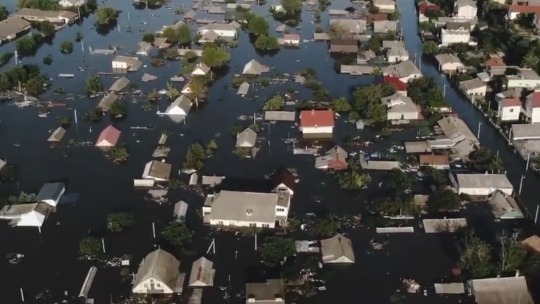

#russia is a terrorist state#war in ukraine#russia invades ukraine#russian terrorism#fuck russia#russian invasion#ukraine#russo ukrainian war#ways to help ukraine#donate to ukraine
22 notes
·
View notes
Note
What led you to be interested in nuclear/atomic stuff?
This one's a bit funny bc in junior year of high school I took environmental sciences and I had to do like a 5 minute presentation on the Fukushima NPP incident.
Idk why but I went a bit overboard and started watching documentaries on the matter, and then about Chernobyl and then I went down the rabbit hole so now here I am.
24 notes
·
View notes
Text
History of the RBMK 1000 (Reaktor Bolshoy Moschnosti Kanalnyy): High Power Channel Type Reactor

The RBMK 1000 reactor, the type involved in the Chernobyl Disaster, is a boiling water reactor (BWR) designed in the 1960s at the Kurchatov Institute, the Soviet Union's nuclear science center.
The USSR had placed a priority on developing nuclear power in the late 1950s in its never ending attempts to improve its infrastructure and power its rapidly expanding industrial base. Nuclear reactors are extremely effective at providing high baseload capacity to a power grid, since they are rarely switched off and (depending on the design) can generate enormous amounts of electricity for lower running costs than a more traditional hydrocarbon power plant. Essentially, since they are (almost) always on, they are always providing the grid with a large and extremely reliable supply of energy. It also allowed the USSR to appear at the front of atomic energy, and laude the successes of the ‘Peaceful Atom’. In the atmosphere of the Cold War, peaceful use of atomic power was a key propaganda tool at home and abroad.
The RBMK was selected for construction by the Ministry of Energy over the rival VVER Pressurized Water Reactor in 1968. It was chosen because it was cheaper to construct in terms of material costs, and the components could be mass produced in pre-existing factories for far lower cost. With an enormous power output of 1,000 MWe (megawatts of electricity) it was declared the 'National Reactor' of the USSR. Construction began on the first RBMK in 1970 at the Leningrad Atomic Energy Station. This unit entered service on December 21st, 1973.
Below: A labeled diagram of the core of an RBMK type reactor.

The RBMK 1000 and its successor RBMK-1500 (basically the same reactor with a slightly higher power output) was fraught with safety issues almost from its inception. This was related to several design features and quirks of the reactor, notably the abnormally high positive void coefficient due to steam bubbles in the coolant circuit and the use of graphite as a moderator. Several other even more concerning design flaws would become apparent over the course of its operation, culminating in the explosion of Chernobyl Unit 4 on April 26th, 1986. These revelations have even continued up until present day, with the most recent example being in 2012 when Leningrad Unit 1 (the one mentioned at the end of the previous section) had to be shut down for 18 months to replace graphite moderator blocks that had deformed due to heat and extensive use. This issue has been identified at several other RBMKs.
The reactor type experienced no less than two partial meltdowns in the history of its operation, one at the Leningrad plant and one at the Chernobyl plant (the partial meltdown incident at the Chernobyl plant is different from the explosion and complete meltdown of Unit 4 in 1986). Both of these were serious incidents with not insignificant radioactive releases, but they only partially damaged the respective reactors. The public was not notified in either case, and all information on the design flaws was kept secret by order of the USSR’s highly centralized government.
RBMK construction was halted only in the wake of the Chernobyl Disaster in 1986. Of the 26 reactors approved for construction, only 18 ever entered service. Several modifications were made to the existing RBMKs to eliminate the dangerous flaws that had lead to the 1986 accident. As of 2023, most RBMKs have been shut down and decommissioned. Of the 18 completed reactors, only eight still operate (Three at the Kursk NPP, two at the Leningrad NPP, and two at the Smolensk NPP. All but one of them are scheduled to be shut down and decommissioned by 2030).
The RBMK’s impact has primarily been showing that graphite moderated reactors have far fewer safety features than other water moderated reactors like those in the West. Ironically, the VVER which had been sidelined by the RBMK has enjoyed massive commercial success both in Russia and abroad as an exported design. VVERs are still being actively built and operated in about a dozen countries worldwide.
This is simply an informative blurb on the history of the RBMK-1000 nuclear reactor. I am going to make a more in depth explainer of how the reactor is built as well as an analysis of the physics of the accident at Chernobyl. I will update this post with a link to them when they are complete. My planned deadline is the 26th of April, the anniversary of the explosion. I hope this post has been informative and I am of course happy to answer any further questions and provide any requested information.
#rbmk#nuclear reactor#chernobyl#nuclear power#bwr#disaster#history#autism#nuclear#accidents and disasters#radiation#rbmk 1000#reactor#chernobyl hbo#chnpp#ussr#soviet union#chernobyl disaster
51 notes
·
View notes
Text
#chernobyl#soviet union#soviet history#soviet#chernobyl nuclear power plant#chernobyl disaster#andropov#yuri andropov#чернобыль#андропов#ссср#русский tumblr
5 notes
·
View notes
Text
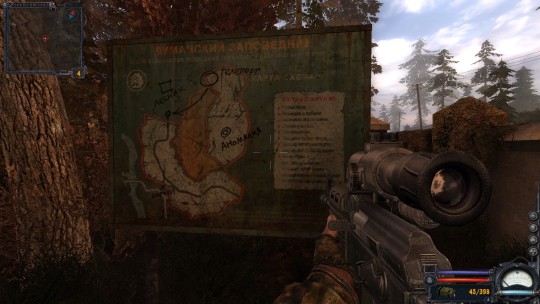

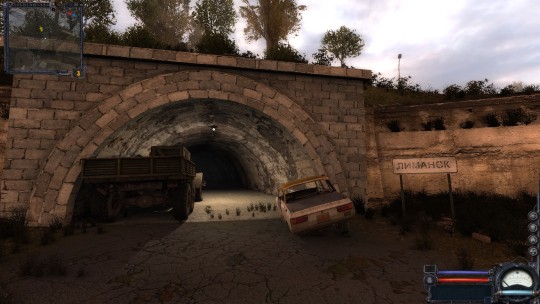



some selections from the vanilla clear sky playthrough i finished last night. ive always thought the STALKER games are beautiful.
red forest /// limansk /// limansk hospital & chernobyl npp
#s.t.a.l.k.e.r#s.t.a.l.k.e.r clear sky#clear sky#game screenshots#<3#the feeling of playing these games makes me feel so nostalgic and in my element
19 notes
·
View notes
Text
«According to the FSB, on the eve of May 9, a sabotage and terrorist group of IEDs of Ukraine planned to undermine more than 30 pylons of high-voltage power lines of the Leningrad and Kalinin nuclear power plants. If successful, this would lead to a shutdown of nuclear reactors, disruption of the nuclear power plant. The terrorists managed to blow up one and mine four pillars of the power lines of the Leningrad NPP and lay IEDs under seven pillars of the Kalinin NPP, the security service added.»
I terroristi Ukraini si sono messi a giocare ad attaccare i reattori nucleari. Se aspettiamo troppo a lungo, ci ritroveremo di sicuro, al 100%, con una seconda Chernobyl. I terroristi Ukraini sono disperati, sanno di non avere nessun'altra possibilità, sanno di avere già perso.
————————————————
📡Vai a ControNews
🎙Entra in Chat
🚨Sintonizzati sul SEGNALE
7 notes
·
View notes
Note
I’ve likely flooded your inbox by now. Tell me about Medvedev?
-R, (Rodka).
Hi hi hello Rodka! Hell yeah, let's get into that mf-- man. I mean man.
He's the author of The Truth about Chernobyl aka Chernobyl Notebook and No Breathing Room (it takes a masochist to read that, which I am not. It's in the Drive regardless, just in case someone out there is). The general consensus goes that he was more or less a mouthpiece for the government, spreading their narrative further. The book, being one of the first ones about the disaster, was meant to ensure that the general public blames all the convenient people, overlooking the ones that truly mattered and were to blame in this story.
In the preface of very own his book, one S. Zalygin (I don't know who you are and do not care to find out) describes him as such:
The author
is a nuclear power specialist who worked for a time at the Chernobyl AES
and knows it well, just as he is personally acquainted with all the principal
participants in the events. By virtue of his official position, he has attended
many of the crucial conferences concerning nuclear power plant
construction.
Worked for a time at Chernobyl AES is one way to put it. I mean... sure, he did. According to Steinberg at least, he even was the first Deputy Chief Engineer. For 6 months. In 1973. According to Dyatlov, Medvedev was in Chernobyl from 1972 until 1974 - whichever the case may be, that's either 5 or 3 years before the launch of the first unit. Now, time for a little conspiracy theory... Guess when Dyatlov, who was very well known for tolerating nothing but absolute professionalism and discipline, started working in Chernobyl? In 1973. And guess who the first author (if I'm not mistaken) to spread the narrative about Dyatlov basically being The Devil and so much more was? Medvedev. Listen, I'm not saying these two things are related... HOWEVER...
Nah, I'm kidding. If that was the case, A.S. Dyatlov would have mentioned so in How It Was, in which he does talk in length about Medvedev and his book, mainly in chapter 9. He is mean to him in the best, most professional way possible. Example being this bit:
“I arrived at the construction site of the
nuclear power plant in the village of Pripyat
directly from the Moscow clinic, where I was treated for radiation sickness. I still felt bad, but I could walk and decided that, working, I would get back to normal faster.”
I don’t know how he felt - bad or good, but according to the 6th hospital (A.K. Guskova and A.F. Shamardin), G. Medvedev did not have radiation sickness and the dose was minimal.
He really said I went to the idiot village (got the most important staff from the hospital in Moscow on record) and everybody there knew you (they said you were fine, you fucking liar).
I'm not too sure where I heard this (maybe from Kupnyi?), but the general opinion of the people in the nuclear field, people from ChNPP of Medvedev is that... well... they don't see him as a professional at all, really. He was deemed untrustworthy, a liar and first and foremost - someone lacking the technical knowledge he always presented himself as being in possession of.
Additionally, this is what Nikolai Steinberg - one of the people on the INSAG-7 commission, a ChNPP worker (a book of his is on the Drive, too, by the way) - had this to say about him in this incredibly long interview with not only him but quite a few other interesting people... like the one and only, Stolyarchuk: bless whoever clipped it so that I don't have to look for the right part in a 3 hour long video! (Yes, there are subtitles! And there's also part two) Safe to say - nobody in the professional field likes Medvedev :)
#file: special interest: chernobyl#my hatred towards anyone slandering the NPP staff is absurd (i will never stop)#file: ask!#asker: rodka#Chernobyl
5 notes
·
View notes
Text
The Nuclear City
The market, though small, was as lively as any I saw in Cuba. We walked from stall to stall, past vendors selling tropical fruit and sacks of rice. Behind one table a woman sat on the curb, a sack between her thighs, tapping a sieve like an old-timey pan-handler as she separated insects from grains of rice. I bought a portion of fresh, sticky mango slices… realising too late that there was nowhere to wash my hands clean after.
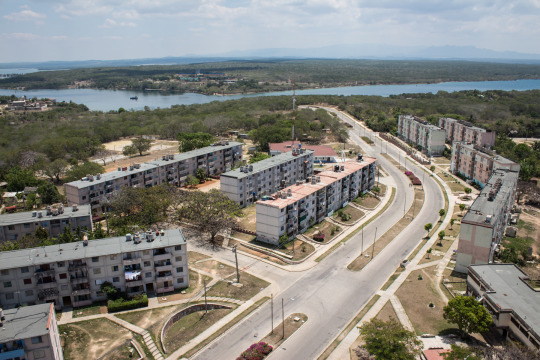
Ciudad Nuclear, Cuba as seen from the 14th floor rooftop of an unfinished apartment block.
The sun was beating down hard so the four of us ducked into the welcome shelter of a bar. We were the only customers; it was dark inside, cool, with flies buzzing lazily around the slow-moving ceiling fan. We ordered a round of beers – Cuban Bucaneros – and I held the cold can up to my baked skull, my temples, then rolled it between my hands allowing the frosty condensation to de-gunk my fruit-sticky fingers. I looked out at the market: an island of humanity, while all around it rose the empty shells of unfinished residential blocks. This handful of stalls was now the social heart of a city once built for thousands, and these people the last stubborn lives to remain amongst the ruins of Ciudad Nuclear.

Thousands of apartments built for construction workers and Soviet nuclear engineers now sit abandoned.
Back in 2014 I shared an article about my visit to an unfinished nuclear power plant in Cuba. It was no more than a concrete shell by the time I saw it, with a dome that made it look almost like a temple, left abandoned on the Caribbean coast.
The site had been built with Soviet money and know-how, and was to be accompanied by a brand new city for power plant workers. The Chernobyl reactors in Ukraine had the workers’ city at Pripyat; the Lithuanian reactor at Visaginas, likewise, had a model socialist city raised up almost overnight in its shadow; and here at Juragua in Cuba, the Soviets helped build ‘Ciudad Nuclear’: in English, simply, ‘Nuclear City.’
The USSR began working on the Cuban nuclear power plant in 1976, and Ciudad Nuclear was opened on 13th October 1982, to house the influx of Soviet scientists and engineers. Located six miles from the plant it was to feature 4,200 homes but the Cuban plant was never finished. Construction ground to a halt in 1989, as the funding dried up and the Soviet Union teetered on the brink of collapse. The intended workers’ city was left in limbo as a result: half finished, only part inhabited, an unsustainable cluster of concrete dwellings on a remote stretch of the Cuban shoreline.

Ciudad Nuclear, Cuba: view from the balcony of a spacious residential complex that never got finished.

A handful of residents still live in Ciudad Nuclear surrounded on all sides by empty blocks, and with the unfinished power plant just visible on the horizon.
I made the journey down to Juragua with friends. We hired a car in Havana, and drove for several hours to reach the site on the south side of the island. We slept in a casa nearby, a sweet little place down by the water’s edge, but on the day of our intended visit to the plant we found the place crawling with security guards. Later we’d come back, and we’d find another way inside the unfinished Juragua NPP – but first we spent an afternoon in Ciudad Nuclear.
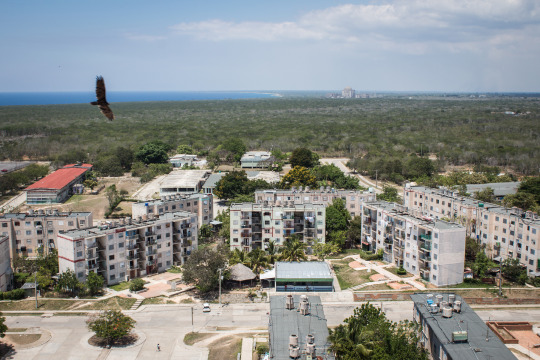
A Cuban turkey vulture circles over the quiet streets of Ciudad Nuclear.
Ciudad Nuclear is a peculiar place. I want to call it a ‘ghost town,’ but that wouldn’t be entirely accurate. The handful of citizens who remain here are, for the most part, commuters. Some drive 20 miles to work in Cienfuegos, a larger town with a busy port and industrial sector. Not a lot of Cubans have their own transport though, which means that Ciudad Nuclear – an unfinished, out-of-the-way conurbation with little going on in terms of entertainment or employment – is doomed to a slow depopulation.
Leaving the market, we turned a corner and quickly found ourselves alone. Down the length of Ciudad Nuclear’s main street, only two parked cars and a couple of distant pedestrians were visible. Rounding a corner to the next street we met a small family and a donkey, but the rows of apartment blocks behind them looked desolate and bare.

Empty spaces inside a tower block planned for luxury apartments.
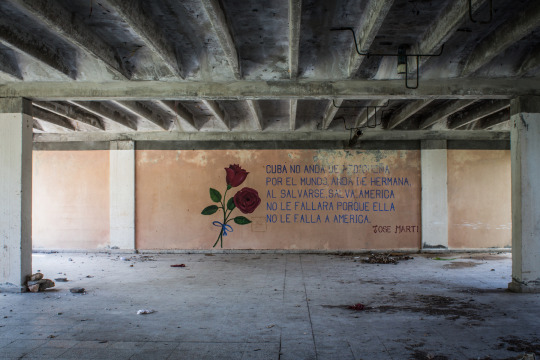
Poetry by José Martí appears on a wall in what might have been intended as a cafeteria.
Save for the occasional sheet flapping in the wind on some third-floor washing line, most of the buildings here seemed to be uninhabited; many looked like they had never been finished, their faded pastel exteriors wrapped around empty cement boxes. Inside one large ground floor space (a shop or a café?) I found a wall decorated with a verse by José Martí, Cuba’s most beloved revolutionary poet:
Cuba no anda de pedigueña
Por el mundo, anda de hermana
Al salvarse, salva América
No le fallará, porque ella
No le falla a América.
Poetry always loses a little in translation, but in English it means something like this:
Cuba does not go around the world as a beggar but as a sister
By saving herself, she saves the Americas
She will not fail, because she will not fail the Americas.
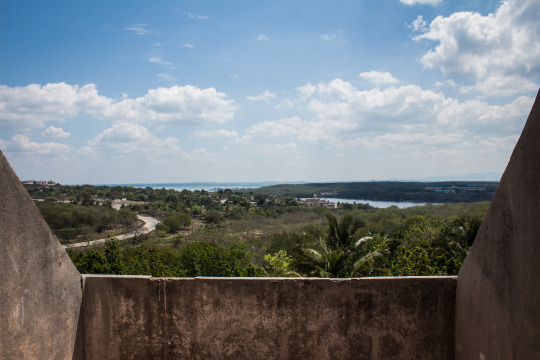
Looking east from Ciudad Nuclear, where a narrow strait connects the Caribbean to the inland Bay of Cienfuegos.
Some of the buildings around Ciudad Nuclear stood near to collapse. I looked inside a few, though there wasn’t much to see. The risk-reward ratio didn’t seem weighted in my favour, so for the most part when I saw ‘Derrumbe’ – ‘Collapse’ – written across a building, I kept away.
Heading back towards the centre we passed a naked tower block, the tallest we’d seen so far. Across its side were painted the words, ‘¡¡Socialismo o Muerte!!’ though it felt like an oddly subversive slogan, given the context. Socialism or Death. This place seemed to have a little bit of both.
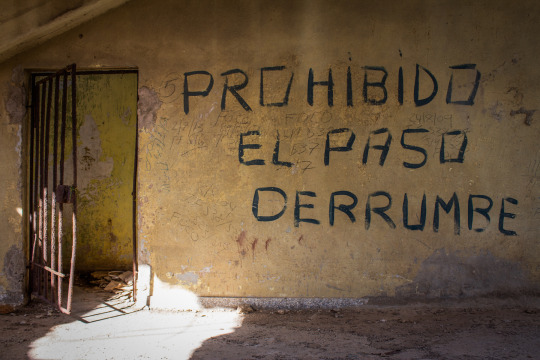

Socialism or Death in Ciudad Nuclear.
Gazing up at that graffitied ruin, I decided I wanted to climb it – to see how Ciudad Nuclear looked from the top. The stairs inside were intact, but there was little else to see inside the 14-floor skeleton; nothing but concrete all the way up. Reaching the top, I walked out of the stairwell onto an open-plan level that fell abruptly away at the edge; no windows, no handrail, just a sudden drop to the street.
Something flapped noisily nearby and I turned, in time to see a large dark bird take flight from its concrete perch on the fourteenth floor balcony. Later I’d be told it was a vulture.
Above the top end of the stairwell, a square hole opened to the rooftop and the sky. It took a bit of a scramble to get up there – balancing on a concrete bannister, catching hold of the ledge above and pulling myself up to the building’s summit – but it was worth the work.
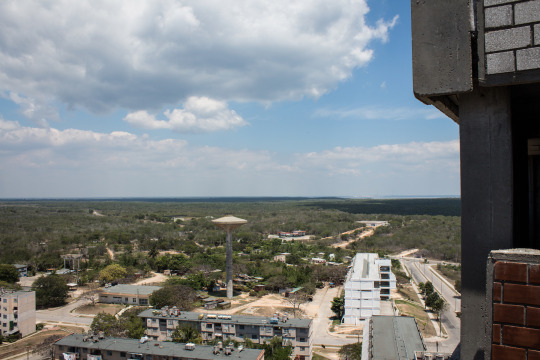


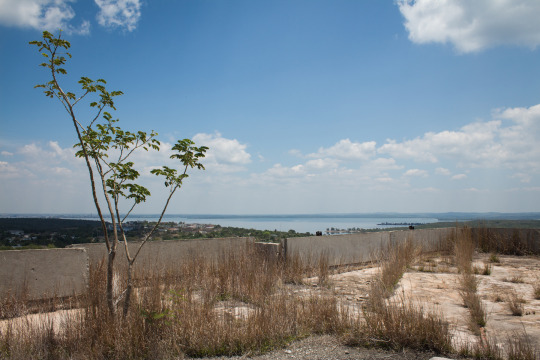
Nature is already reclaiming the rooftops of Ciudad Nuclear, Cuba.

Looking out across the Bay of Cienfuegos from a Ciudad Nuclear rooftop.
Stood up there in the sweltering sun, I traced the shoreline curving into the distance: the beach a ribbon of gold between the water and the forest. Below me the empty streets and unfinished buildings of Ciudad Nuclear fanned out in grid formation, a model city that never quite made it off the drafting table. Meanwhile along the coast, an abandoned 16-floor reactor building rose from the forest like some ancient temple ruin: a concrete mausoleum for the Cuban-Soviet nuclear programme.
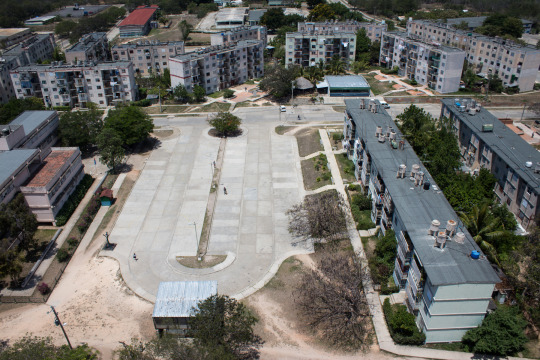
Designed to provide 4,200 homes, this is how the city looks today.

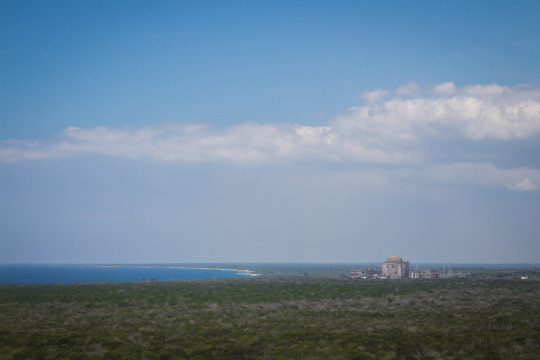
The building that started it all: six miles from the city sits the concrete shell of the Juragua Nuclear Power Plant.
-
Text and photo by Darmon Richter [adapted with permission from an article at [EX UTOPIA]
6 notes
·
View notes
Text
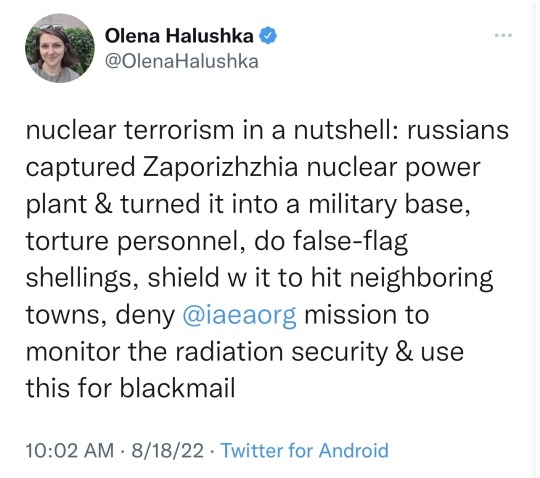
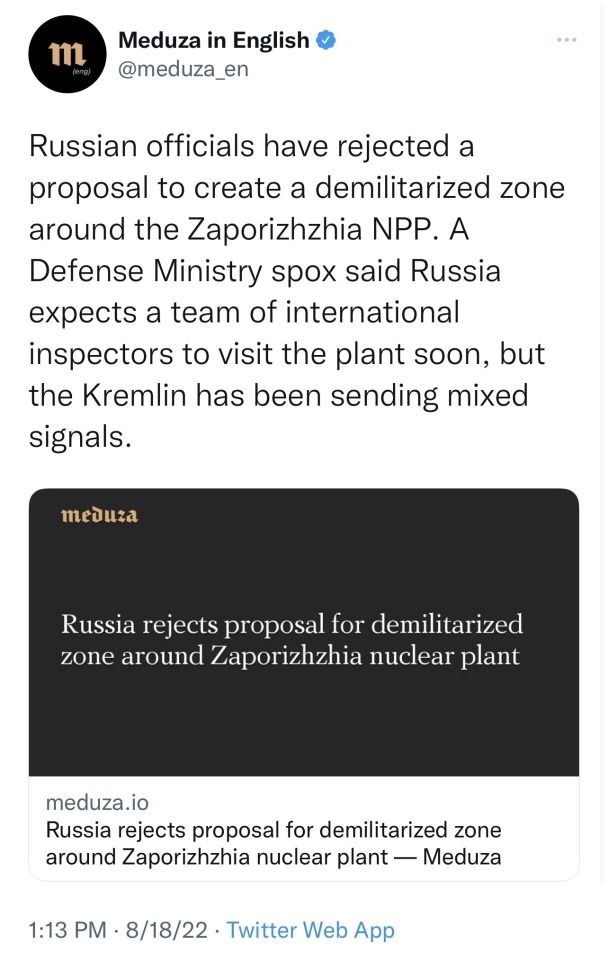




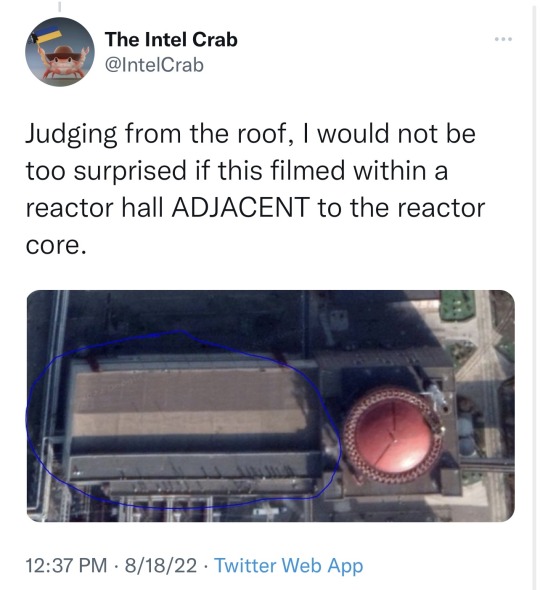


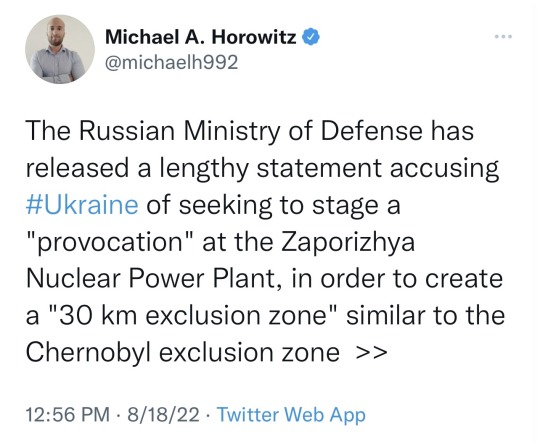
If you have a moment, please call your elected officials and urge them to do what they can to prevent a major accident at the Zaporizhzhia NPP and prepare radiation prophylaxis materials to give to impacted people if, god forbid, an accident does occur.
A major accident at ZNPP would cost lives in the immediate aftermath; cause an exclusion zone to be created around the plant; uproot and destabilize thousands of people; and increase cancer rates. Like Chernobyl, it would take a massive toll of the people of Ukraine and their culture.
And the winds will carry any radiation that was released across the globe. No one will be left untouched if a catastrophic incident at ZNPP takes place. It is our duty as human beings to stand with our brothers, sisters, and nonbinary siblings in Ukraine and Europe to prevent this catastrophe… and be prepared to help if the worst happens.
When the explosion at Chernobyl’s 4th block occurred, chief scientific advisor of the Chernobyl Commission Valery A. Legasov was devastated to learn that they only had enough iodine tablets (a form of radiation prophylaxis) for the kindergarteners.
This is not 1986.
The Soviet Union has dissolved.
We are not in the dark on what is happening, and we can do something to help.
Ukraine is fighting for their country and doing their duty as the rightful stewards of the Chernobyl NPP to protect it from the world… and the world from it. Now, they need and deserve our help to prevent an accident like that from ever happening again and to protect the innocent people who could be impacted by an accident.
This is an issue that no one can afford to overlook. I have seen in my research how Chernobyl destroyed lives and families. Please, do your part to make sure that doesn’t happen to anyone else.
#Ukraine#chernobyl#zaporizhzhya nuclear power plant#zaporizhzhia npp#Zaporizhzhia#chornobyl#chernobylhbo#valery legasov#boris shcherbina#russia#fuck putin
32 notes
·
View notes
Text
Btw, I watched the episode with the Valmont-cat, now I'm crying intravenously with emotion, my serotonin scale is close to the nuclear explosion mark at the Chernobyl NPP






#jackie chan adventures#jca#valmont#my little meow meow <3#sorry- but this episode made me die and rise again at the same time- i can' t take it anymore---#helen thinks
33 notes
·
View notes
Note
Salutations!
Do you have a favourite power plant?
Gosh I can’t say I know that many power plants, butI’ve always been partial to the Kursk NPP in Russia.

The ChNPP is so poorly taken care of (for obvious reasons, I can’t really blame the caretakers) and KNPP shows us what Chernobyl looked like in its heyday, and what it might look like today if the accident had not occurred.
9 notes
·
View notes